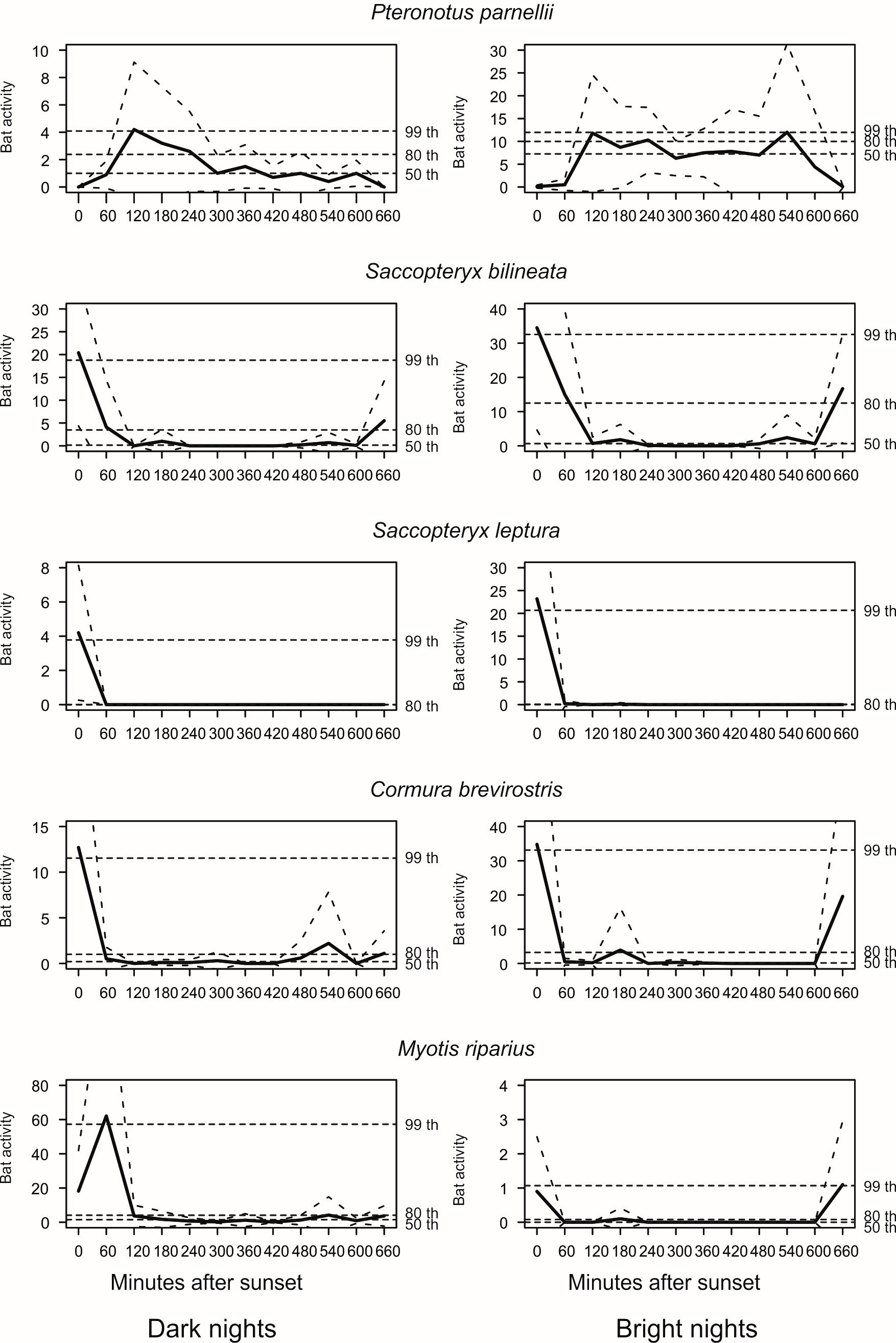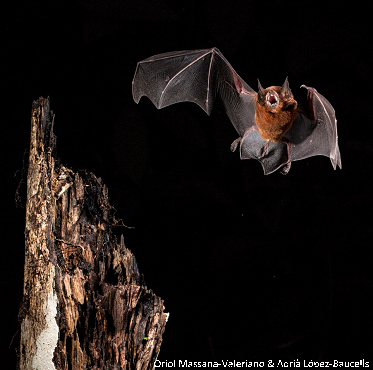Languages
The influence of the moon on bats' activity.
Giulliana Appel, a masters student on INPA's Graduate Program in Ecology, jointly with researchers from PPBio / CENBAM, evaluated the influence of lunar luminosity on the flying activity of insectivorous bats. The research was carried out in the Adolpho Ducke Reserve (Manaus-AM), where ultrasound recorders were installed to identify and evaluate the activity of the bats by the ultrasound that they emit.
The researchers observed that the lunar phobia should not be generalized to all species of bats and the response of bats to lunar luminosity depends on the time scale used. A insectivorous bats, while at risk of predation, also predate insects at night. On clear nights there is a tendency for bats to have two peaks of activity, one in the early evening and the other at the end (before sunset) (Figure 1). Unlike dark nights, that bats activity has only a peak activity in the early evening. This change in activity peaks probably follows the peaks of nocturnal insect activity. Different from what was expected by the lunar phobia, two species (Saccopteryx bilineata and Pteronotus parnellii - Figure 2) of bats are more active on clear nights probably because they are fast-flying species, decreasing the risk of predation, and having a higher food supply in these nights.

Figure 1. Hourly activity of the five species of insectivorous bats analyzed, it is noted that for most species on dark nights there is only a peak of activity in the early evening and on clear nights another peak of activity at the end of the night.

Figure 2. Pteronotus parnellii, one of the species of aerial insectivorous bats that behaves contrary to what was expected of the "lunar phobia", this species is more active on clear nights.
The article "Aerial insectivorous bat activity in relation to moonlight intensity" by Giulliana Appel, López-Baucells, William Ernest Magnusson and Paulo Estefano D. Bobrowiec can be accessed here.
For more information, please contact the principal author via email giuappel@outlook.com

